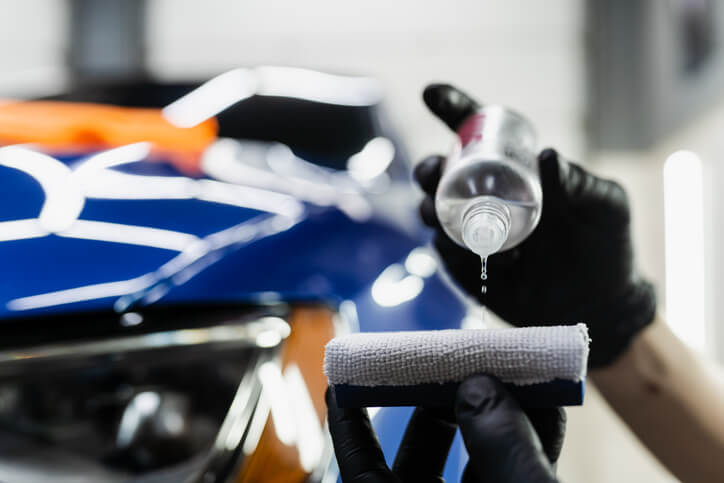The Importance of Lubricant After Auto Detailing Training
While a meticulous eye and practiced hand are crucial for a successful auto detailing career, a fundamental understanding of lubricants is equally essential. Completing ATC Montreal’s auto detailing training program equips you with the necessary skills for cleaning, polishing, and protecting vehicles.
One of the key areas of focus in auto detailing training at ATC is mastering the proper use of lubricants since using suitable lubricants effectively is essential in achieving a flawless finish and maintaining a car’s longevity.
This blog post highlights the importance of lubricants to auto detailing and pinpoints ways to choose the right lubricant for various detailing jobs.
The Importance of Lubrication in Auto Detail Training
Lubricants in auto detailing are not only used in the engine or moving parts. They are crucial in almost every aspect of the detailing process, from cleaning to protection. Lubricants can prevent damage during cleaning, enhance the application of protective coatings, and ensure the smooth operation of components.
In the detailing process, lubricants play a key role in:
- Reducing Friction: Polishing compounds and clay bars require friction to remove contaminants and imperfections. Lubricants minimize excessive friction, preventing surface marring and ensuring a smooth finish.
- Preserving Paintwork: Detailing often involves using abrasive materials. Lubricants create a protective layer, minimizing the risk of scratches and swirl marks on the car’s delicate paintwork.
- Enhancing Cleaning Power: Certain lubricants possess cleaning properties that aid in dissolving stubborn grime and residues, allowing for a more efficient cleaning process.
- Protection: Lubricants can leave behind a protective film that repels dust, dirt, and water, extending the life of the car’s wax or sealant.

Auto Detailing Courses Emphasize Choosing the Right Lubricant
As you have learned in auto detailing training, not all lubricants are created equal, and using the wrong type can do more harm than good. For example, a lubricant used on the paintwork will not be suitable for interior components or moving parts. Selecting the appropriate lubricant depends on the specific detailing task:
- Polishing Compounds: Use a polishing lubricant specifically formulated to minimize friction and prevent scratching during the polishing process. Consider factors like the abrasiveness of the compound and the type of paint being polished.
- Clay Bars: Clay lubrication sprays or bars are essential for claying, which removes bonded contaminants from the paint surface. These lubricants ensure the clay glides smoothly, preventing scratches and maximizing cleaning effectiveness.
- Trim Restorers: Water-based or silicone-based lubricants can revive faded plastic trim. They enhance the application process and provide a protective layer to prevent future cracking and fading.
Here are some additional factors to consider when choosing a lubricant:
- Compatibility: Ensure the lubricant is compatible with the cleaning product or material.
- Biodegradability: Opt for eco-friendly, water-based lubricants whenever possible.
- Ease of Use: Choose easy-to-apply and remove lubricants, minimizing the risk of leaving residues behind.
Learning Proper Lubricant Techniques in Auto Detailing Training
Our comprehensive auto detailing courses emphasize the proper application techniques for various lubricants. This includes:
- Thin and Even Application: A thin, even coat of lubricant is sufficient. Excessive application can lead to difficulty removing residue and potentially mask imperfections.
- Focus on Contact Areas: Apply lubricant to the areas where the polishing pad or clay bar will contact the paintwork.
- Reapplication: As the lubricant dries or becomes contaminated, reapply a thin layer to maintain a smooth working surface.

Beyond the Basics: Advanced Lubricant Applications
- Water-Based vs. Solvent-Based: While water-based lubricants are generally safe for most surfaces, solvent-based lubricants might be necessary for removing stubborn grease or tar. However, due to their aggressive nature, they require cautious use and should only be applied to specific areas as instructed by the manufacturer.
- Clay Lubricants: Detailing clay often comes pre-lubricated. However, a dedicated clay lubricant spray can enhance cleaning efficiency for heavily contaminated surfaces.
Are you interested in pursuing an auto detailing career?
Contact ATC Montreal for more information.


